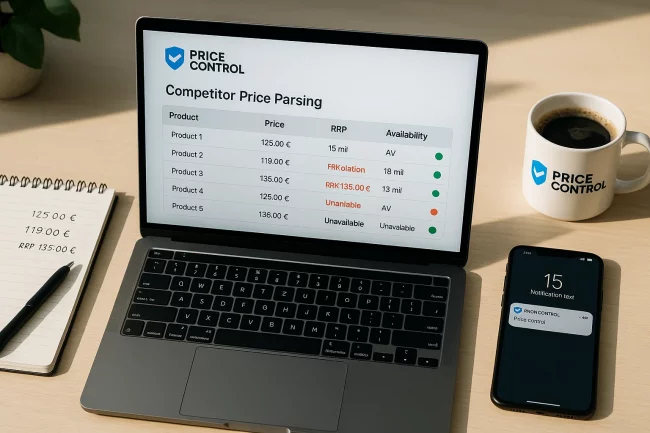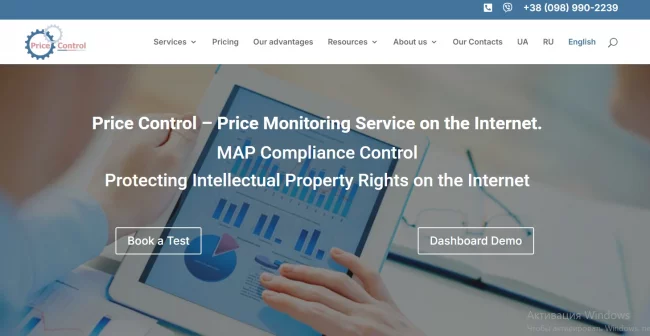Competitor Price Scraping - Why Your Business Needs It
Table of Contents
-
Introduction: Why businesses need to monitor competitor prices
-
What is price scraping — explained simply
-
Why your business needs price parsing
-
Monitoring competitiveness
-
Detecting MAP violations and price dumping
-
Supporting dynamic pricing
-
Optimizing product assortment and strategy
-
Saving time and resources
-
-
What to look for when choosing a parsing tool
-
Why Price Control is more than just price collection
-
Conclusion: Scraping as your competitive advantage
In e-commerce, knowing your competitors’ prices isn’t just “nice to have” — it’s critical. The market changes fast. Competitors launch promotions, adjust assortments, play with pricing. If you find out a week later, you’ve already lost the edge.
This is where the hero of our story comes in — price scraping.
Price Scraping — In Simple Terms
Scraping is the automated collection of data from websites. In business, it means regularly obtaining up-to-date information about what your competitors are doing:
-
what prices they set,
-
which promotions they run,
-
what’s in stock and what’s sold out,
-
how frequently they update pricing.
All of this is done not manually, but through software that "crawls" the target pages and structures the collected data — often in a format ready to be imported into your CRM, BI system, or even a spreadsheet.
Why Does Your Business Need It?
There are many reasons — here are the key ones:
1. Control Your Market Competitiveness
Parsing gives you a clear picture of your price positioning. Are you cheaper? More expensive? Slightly off-market? Without this context, you’re making blind pricing decisions.
2. Detect MAP Violations and Price Dumping
For brands and distributors, parsing is a tool for oversight. If any partner breaks the Minimum Advertised Price (MAP) policy, you’ll be notified instantly. This allows you to act quickly and maintain pricing discipline.
3. Support for Dynamic Pricing
If you’re implementing automated pricing — regular price parsing is essential. It's what enables rule-based strategies like: “If a competitor lowers the price — drop ours slightly,” or “If competitors run out of stock — raise our price.”
4. Optimize Your Assortment and Strategy
Parsing lets you track competitor availability, promotions, and top-sellers. You can use this data to adjust your product lineup and inform your marketing campaigns.
5. Save Time and Resources
Manually comparing dozens of sites is tedious. Scraping automates the process. A system like Price Control collects and processes data daily, with high accuracy. You just log in and see it all on a dashboard.
And Now — A Critical Point
Good parsing isn't just about collecting prices. It also means:
-
clean, structured data
-
real-time updates
-
duplicate filtering
-
protection from blocks and captchas
-
scalability (across markets, regions, categories)
That’s why choosing a professional solution is key. One of the best examples is Price Control. It doesn’t just collect prices — it helps businesses make decisions.
To Sum It Up
Competitor price scraping isn’t just a buzzword. It’s a real tool that helps you:
-
stay informed about the market,
-
react quickly to changes,
-
control partner compliance,
-
sharpen your pricing strategy.
In a world where speed and precision decide who wins — parsing gives you the competitive edge. And if you’re not using it yet — chances are, you’re already behind.
































